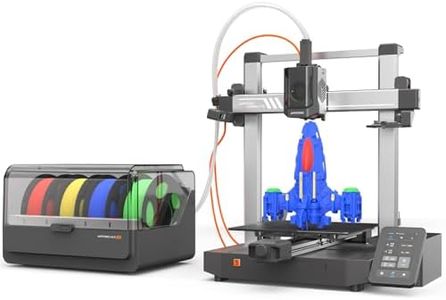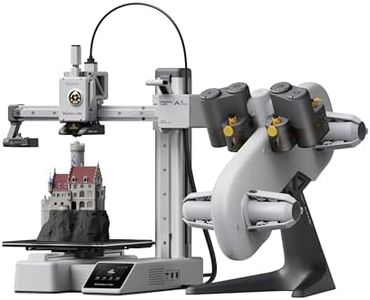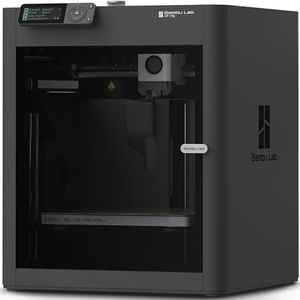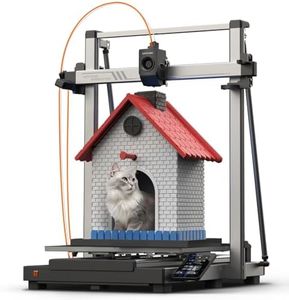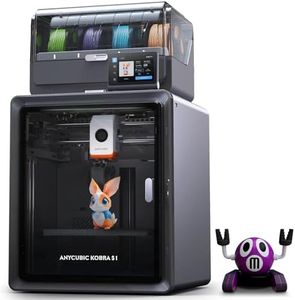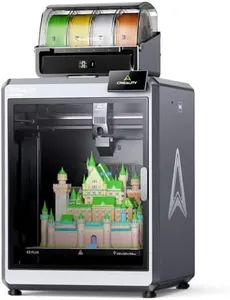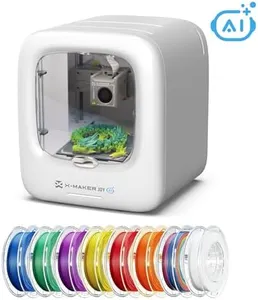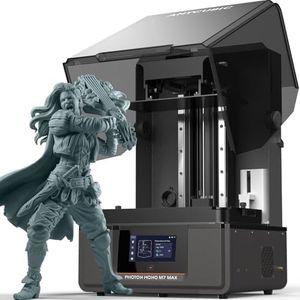10 Best Diy 3 D Printers 2025 in the United States
Our technology thoroughly searches through the online shopping world, reviewing hundreds of sites. We then process and analyze this information, updating in real-time to bring you the latest top-rated products. This way, you always get the best and most current options available.

Our Top Picks
Winner
Bambu Lab A1 Mini Combo, A1 Mini 3D Printer and AMS lite, Support Multi-Color 3D Printing, High Speed & Precision, Full-Auto Calibration & Active Flow Rate Compensation, ≤48 dB Quiet FDM 3D Printers
Most important from
596 reviews
The Bambu Lab A1 Mini Combo is a compact and smart 3D printer ideal for DIY enthusiasts looking for fast and precise printing. It offers impressive print speed thanks to its high acceleration, making it one of the quicker options in its size range. The printer supports multi-color printing when paired with the AMS lite accessory, which adds creative versatility. Calibration is fully automatic, which means you won’t need to fiddle with manual settings, saving time and reducing errors.
The machine also features active flow rate compensation, helping produce smooth, consistent prints. With a quiet motor and noise cancellation keeping sound levels under 48 dB, it’s friendly for use in home or small workshop environments. The frame is made of sturdy metal, giving it durability and stability during prints. The easy setup process and quick nozzle change system make maintenance straightforward, encouraging regular use.
If you want a reliable, user-friendly 3D printer for colorful and high-speed prints in a small footprint, this model is a strong contender, especially if you prioritize convenience and noise reduction. However, for larger build volumes or highly specialized filament needs, other models might be more suitable.
Most important from
596 reviews
Bambu Lab P1S 3D Printer, Fully Enclosed, Support Up to 16 Colors/Multi Materials, 500mm/s Fast Printing & High Precision, CoreXY & Auto Bed Leveling, Ready-to-Use FDM 3D Printers Large Print Size
Most important from
273 reviews
The Bambu Lab P1S is a well-designed DIY 3D printer that stands out with its fast print speeds of up to 500mm/s and high precision, making it a solid choice for users who want quick results without sacrificing detail. Its fully enclosed frame helps maintain stable printing conditions, especially when using more advanced filaments. The auto bed leveling feature simplifies setup and improves print success, which is great for beginners or those who want less hassle.
The printer supports a wide range of filaments like PLA, PETG, TPU, and even some tougher materials like PA and PC, although it’s not recommended for carbon or glass fiber reinforced filaments. The multi-color printing capability (up to 16 colors) is a unique bonus but requires an additional accessory (Bambu Lab AMS) to work. Assembly is straightforward, with a promise of setup in about 15 minutes, which suits hobbyists who want to start printing quickly.
Consider that the printer’s weight (around 17.7 kg) and size mean it might need a dedicated space. The P1S offers versatility and speed, catering well to DIY enthusiasts looking for quality and a range of filament options, though the extra cost and setup required for multi-color printing could be a factor to keep in mind.
